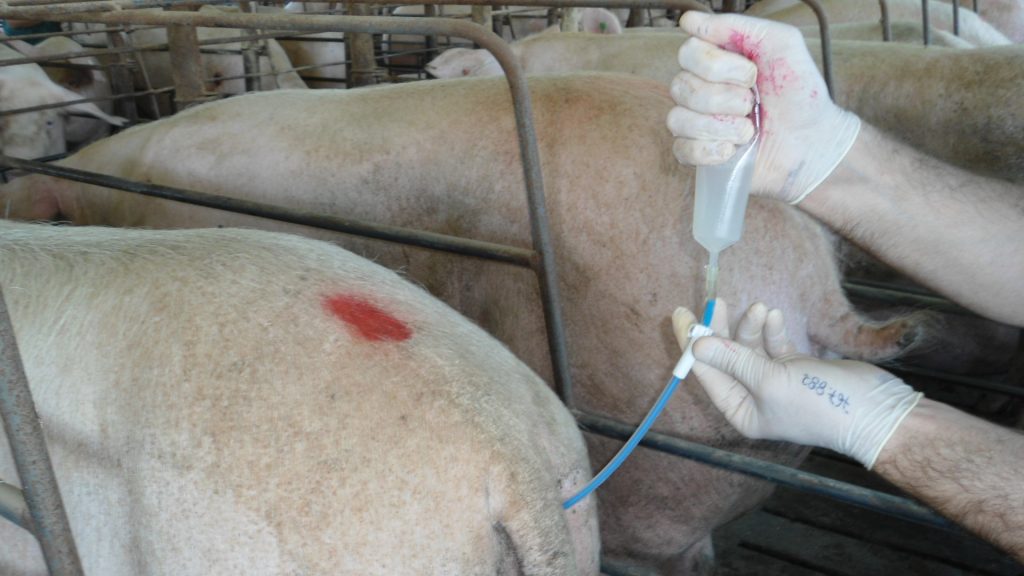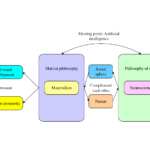Por Monike Quirino, PhD Candidate in Physiopathology of Swine Reproduction – Setor de Suínos, Universidade Federal do Rio Grande do Sul. Porto Alegre, Rio Grande do Sul, Brazil
The use of new drugs and protocols has improved the reproductive performance in fixed-time artificial insemination (FTAI) in swine. Nevertheless, the cost of the protocol and the difficulty of measuring its cost-effectiveness in swine farming are pointed out as limitations in the use of this biotechnology. These were the conclusions of a literature review done by researchers from the Federal University of Rio Grande do Sul (UFRGS), Brazil, published in the journal Ciência Rural (Vol. 49, No. 2), under the “Reproductive performance of fixed-time artificial insemination in swine and factors for the technology success”.
The researchers were interested in discussing the benefits and limitations of the latest protocols for fixed-time artificial insemination in swine. In their literature review, they reflect on the application of this biotechnology. In addition to pointing out the main reproductive performance results obtained with the latest FTAI protocols in swine females, they also discuss the key points for the success of this biotechnology.
The benefits of using FTAI include optimizing the workforce, improving coverage planning, as the process provides for only one artificial insemination. The number of total births is not affected by the use of the FTAI, however, the birth rate may be compromised in some cases, which is a limitation for the use of this biotechnology. Another limitation is the cost of the FTAI protocol for gilts due to the need to provide a progestogen prior to the application of the biotene.
Figure 1. Artificial insemination process in swine
According to the researcher Monike Quirino, the information discussed in the review can be used to select protocols for weaned and lactated swine females. “We have outlined the advantages and limitations to be considered by companies that wish to adopt FTAI. Many of the data presented were generated by a Brazilian research group that has been working for more than 10 years in this line of research “, comments the researcher.
The review adds reflections on the protocols of FTAI in swine, whose physiological bases are pointed out by other revisions. Some studies addressed by the researchers were those of Baroncello, et al. (2017), De Rensis e Kirkwood (2016) and Ulguim, et al. (2016).
References
BARONCELLO, E., et al. Fixed-time postcervical artificial insemination in weaned sows following buserelin use combined with/without eCG. Reproduction in Domestic Animals [online]. 2017, vol. 52, pp. 76-82, eISSN:1439-0531 [viewed 4 April 2019]. DOI: 10.1111/rda.12805. Available from: https://www.ncbi.nlm.nih.gov/pubmed/27696569
DE RENSIS, F. and KIRKWOOD, R.N. Control of estrus and ovulation: Fertility to timed insemination of gilts and sows. Theriogenology [online]. 2016, vol. 86, pp. 1460-1466, ISSN: 0093-691X [viewed 4 April 2019]. DOI: 10.1016/j.theriogenology.2016.04.089. Available from: https://www.sciencedirect.com/science/article/pii/S0093691X16301893?via%3Dihub
ULGUIM, R.R., et al. Single fixed-time artificial insemination in gilts and weaned sows using pLH at estrus onset administered through vulvar submucosal route. Theriogenology [online]. 2016, vol. 86, pp. 1072-1080, ISSN: 0093-691X [viewed 4 April 2019]. DOI: 10.1016/j.theriogenology.2016.03.039. Available from: https://www.ncbi.nlm.nih.gov/pubmed/27157392
To read the article, access it
QUIRINO, M., et al. Reproductive performance of fixed-time artificial insemination in swine and factors for the technology success. Cienc. Rural [online]. 2019, vol. 49, no. 2, e20180712, ISSN: 0103-8478 [viewed 4 April 2019]. DOI: 10.1590/0103-8478cr20180712. Available from: http://ref.scielo.org/wssz54
External link
Ciência Rural – CR: <http://www.scielo.br/cr>
Como citar este post [ISO 690/2010]:



















Recent Comments